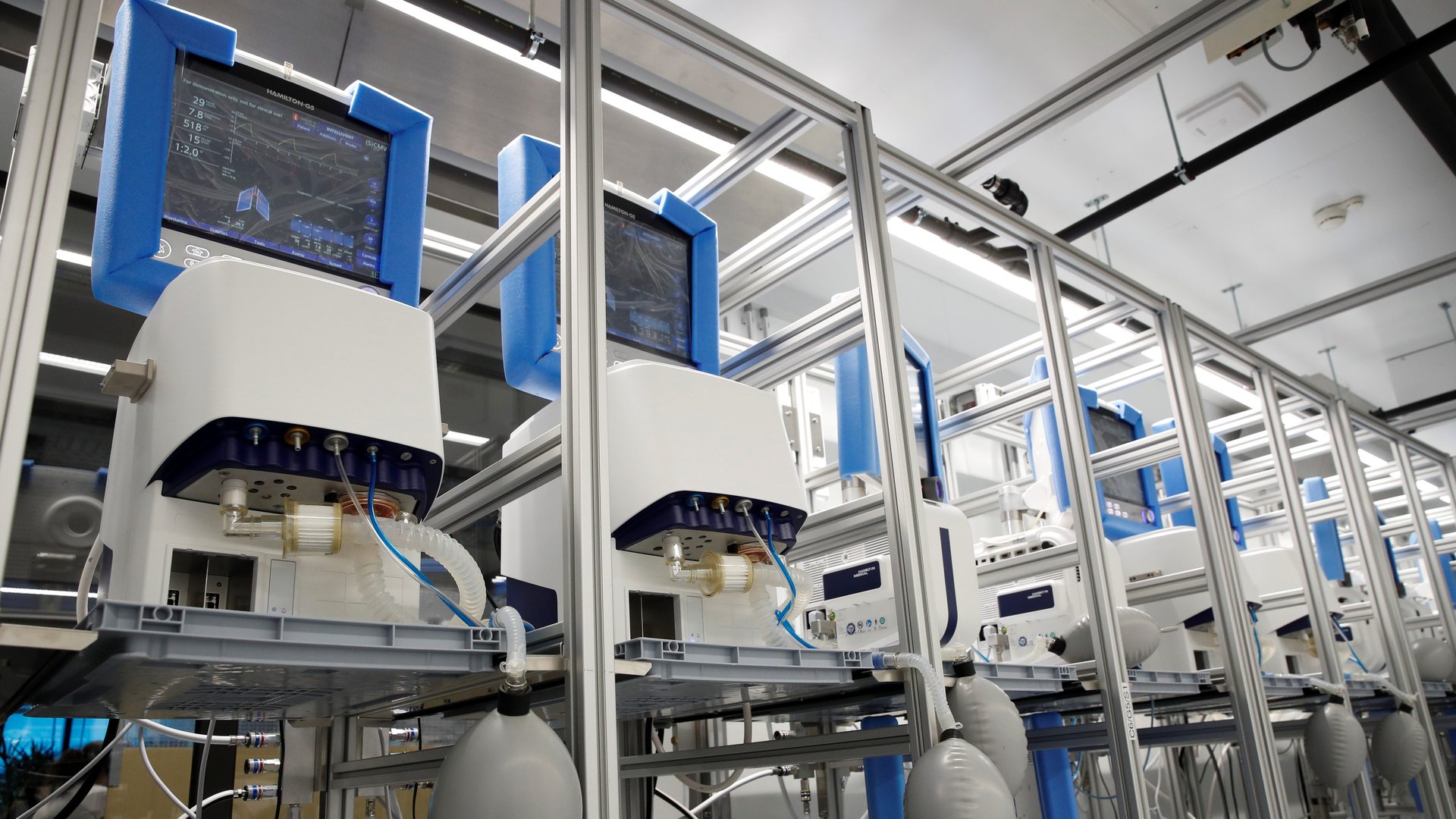What it takes for non-medical companies to produce emergency medical equipment
Not since World War II have so many companies in the business of making cars, clothes, or other items been asked to switch up their production lines for the common good.


Not since World War II have so many companies in the business of making cars, clothes, or other items been asked to switch up their production lines for the common good.
But as Covid-19 has spread around the globe and strained national stocks of hand sanitizer, face masks, and more, companies are retooling to make urgently needed medical supplies. China’s Foxconn, which assembles iPhones for Apple, and automakers in the country have been making face masks. In France, luxury group LVMH is making hand sanitizer. Spanish fast-fashion chain Zara has offered to produce hospital scrubs. UK prime minister Boris Johnson has asked companies such as Rolls Royce to assist in making ventilators, while US president Donald Trump said he will invoke the country’s Defense Production Act to compel American industry to begin making medical supplies.
But changing entire production lines to make unfamiliar items is no simple task.
“What you first have to have is a really granular understanding of what kind of assets are required for this new product: what kind of equipment and what kind of competencies [among workers],” says Thierry Heinzmann, an expert on advanced manufacturing and production at the World Economic Forum (WEF), a non-partisan foundation based in Switzerland. “If the gap is too far, you will not be able to bridge it.”
When companies do make these changes, they tend to focus on products close to their current abilities. During World War II, silk manufacturers made parachutes while automakers produced plane engines, guns, and tanks. Medical products can bring their own challenges though.
It’s still not clear, for example, whether Rolls Royce will be able to produce ventilators easily. The design should be far simpler than the jet engines it builds. But manufacturing a ventilator requires specialized parts and expertise, while medical equipment requires certification and must often be made according to strict standards. “That to me is so far, from an outside view, a pretty large gap,” Heinzmann says.
In a previous statement to Quartz Rolls Royce said it will offer any help it can but didn’t specify whether it would produce ventilators.
Companies ideally need to procure raw materials from their existing suppliers too, otherwise they face a lengthy search and qualification process. Shanghai General Motors, one of the Chinese automakers producing face masks, had a supplier of fabric for car interiors that also made medical-grade textiles, Heinzmann explains. And the company had a clean room for research and development that allowed it to meet the standards for manufacturing medical masks.
Most companies repurposing their factories so far have produced simpler items. Hand sanitizer isn’t much of a challenge for LVMH, which already has the formulation and bottling capabilities it needs at the French factories where it makes fragrances and cosmetics for brands such as Dior. Companies using 3D printing to make respirator valves in Italy only needed the designs to make them.
The good news is trends in manufacturing, such as advanced robotics, data analytics, and 3D printing, have made it easier for companies to switch gears to make even complex products. “What companies are looking for is to be more flexible, have flexible factories that can adapt to make different types of products, who want to be faster to market, who need to customize products based on new consumer demands,” says Francisco Betti, Heinzmann’s colleague and fellow manufacturing expert at WEF. “It puts you in a good position to repurpose an entire production line.”
Those capabilities will be necessary as countries face shortages of essential medical equipment. Betti believes if the crisis drags on and freezes global supply chains, local factories might need to start making basic items for the general market, too, and not just medical supplies.